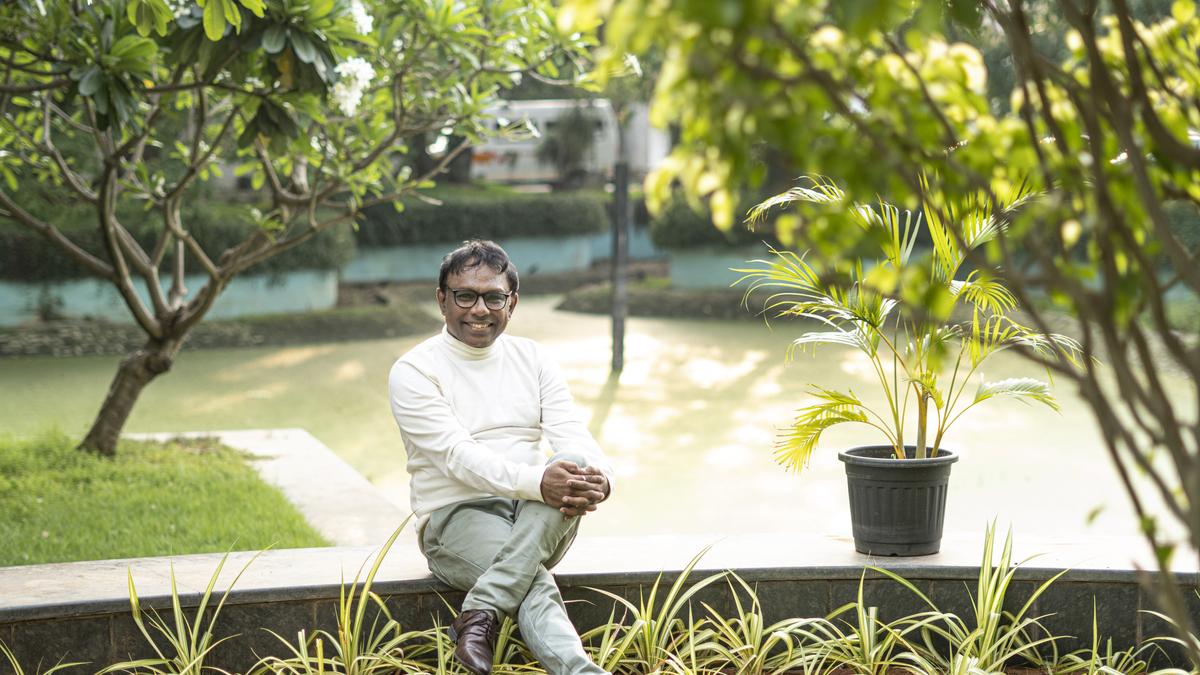Ramesh Vinayakam | Photo Credit: Johan Satyadas
A lot of things can happen during a coffee break. This is what happened in the case of musician Ramesh Vinayakam.
At the Goethe Institute in Chennai, the composer was talking over a coffee break with Sebastian Grams, a double bass player, and Jeremy Woodruff, now at Graz University, when he began the Carnatic kriti. He sang phrases from ‘Thiruvarul thara varuvai’ and asked if it sounded familiar.
“It’s beautiful. The ending feels familiar but we can’t put our finger on it,” he said.
It was a small musical puzzle created by Ramesh, and its climax stunned the visitors. The piece has the same notes as Ludwig van Beethoven’s popular ‘Fur Elise’, which they were very surprised to hear. “For me, it proved something I believe in: the unity of music,” Ramesh said about his musical experiment, which he recently recorded and posted on YouTube.
‘Thiruvarul Thara Varuvai’ is based on a raga Ramesh calls ‘Beethovenpriya’ and is inspired by a simple idea: what if Beethoven had been born in South India?
“This vision led me to ‘Thiruvarul Thara Varuvai’, where I used the melodic elements of the first section in A minor and stuck to it,” he recalls, “Beethoven was a great inventor and I think he must have been fascinated by the complex subtle tones of Indian music, which embellish his own music in a different way.”
‘Thiruvarul Thara Varuvai’ was first performed during a lecture in the December Music Session soon after Ramesh conceived of it, but in 2018, Carnatic musician Abhishek Raghuram sang it with Mylai Karthikeyan (nagaswaram) and L. Ramakrishnan (violin), receiving thunderous applause.
Ramesh has composed ten ragas during his musical career, including Pratidavani, Madya Mohanam and Dwi Nirostra. He is in the process of creating a raga that uses subtle swaras called Shruti Ranjani. “For me, the invention of a raga is a natural process in the evolution of Indian music. All the ragas that are in vogue now never existed initially. We don’t even know how they evolved, whether as a scale or from a phrase or from an emotional lyrical idea that was expressed through a musical idea that gave rise to an elaboration in the raga. Therefore, a raga cannot be a discovery, as some have assumed,” says Ramesh.
Even while working on new compositions, the musician is excited about his passion project, the Gamaka Box Notation System (GBNS), a structured Indian music learning tool that enables conceptual learning of complex ideas. GBNS is at the core of Music Temple, a music technology company incubated by IIT Madras. Ramesh, who is also known in the film music fraternity for hit songs like ‘Vizhigalil’ (2006),Azhagiya Theeye), ‘Enna Idhu’ (Nala Damyanti) and their work Ramanujan among others,He is also looking forward to working in film music. “I am looking forward to doing many more films and creating new music. I believe music is an expression of the divinity already present in man.”
